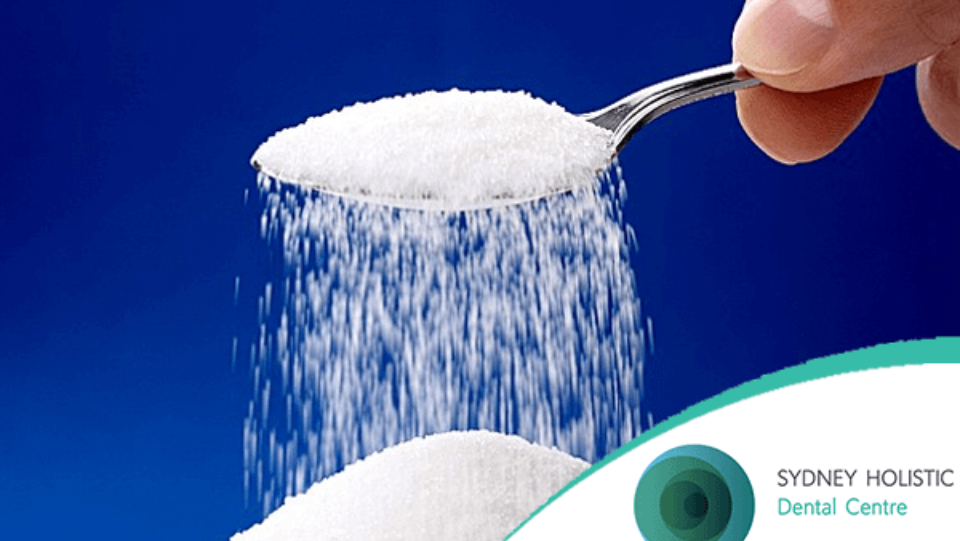6 Surprising Places You’ll Find Sugar
6 Surprising Places You’ll Find Sugar

It’s no secret that dentists are not fans of sugar. In fact the dental profession has been warning about the effects of sugar for over 50 years. Our obvious issues with the sweet stuff is it causing tooth decay, but the health effects are so much more than that.
When our bodies ingest added sugar it must first sort it out to its more basic components – glucose and fructose. Fructose is then processed by the liver, where it proceeds to cause havoc. With an over supply of fructose the liver turns the fructose into fat. Some of that fat gets used and sent out to other parts of the body, but part of it remains in the liver. With the fat building up over time we put increased pressure on our liver and can ultimately lead to Non-Alcoholic Fatty Liver Disease (you can read more about that here and here and here). Sugar consumption has also been linked to increases in bad cholesterol levels, contribution to leptin resistance (resulting in weight gain, cravings, sleep trouble, etc), studies also show it is addictive in the brain and it doesn’t fill you up, meaning you eat more.
So we all know that added sugar is bad, we know to avoid or have limited amounts of chocolate bars and ice-cream but unfortunately the places where we consume the most sugar are hidden in foods disguised as a healthy, something that the recent film ‘That Sugar Film‘ explores all too well. To help you cut down on your sugar in take we’re sharing some surprising foods where you’ll find hidden added sugar.
Fruit Juice
Fruit juice often has massive amounts of hidden sugars. We so often associate it as being a healthy alternative to soft drinks, but what is most surprising is the two often have close to the same amounts of sugar in them. A 250ml serving of Ribena for example has 6.4 teaspoons of sugar, compared to a 250ml serving of Coca-Cola with 6.6 teaspoons of sugar. Even freshly squeezed juices can have high amounts of sugar. If you were to take 10 apples and sit there eating them all, the fibre and nutrients in those apples would fill you up pretty quickly (you would probably only get through 2 or 3 apples max). But if you juiced those apples and poured the contents into a glass, you could easily drink them in a couple of minutes. The key here is to limit the amount of fruit juice you have, perhaps even dilute it with a little water. Try and fill you juices with green veggies and using just a small amount of fruit to sweeten.
Yoghurt
A huge proportion of the yoghurt we get in the supermarkets has been sweetend with sugar. Nestle Ski D’Lite for example has 6.8 teaspoons of sugar, compare that to the 5.7 teaspoons in a Kit-Kat and it doesn’t seem like such a healthy alternative anymore. So often it is the ‘fat free’ options that pack the most punch when it comes to added sugar. When choosing yoghurt, always go for plain or Greek yoghurt and be sure to check the label for any added sugars.
Condiments
Condiments are often a staple at many kitchen tables but unfortunately there can be a lot of hidden sugars in there too. If you’re eating a steak and decide to have two tablesppons of BBQ sauce that equals about 13 grams of sugar, or 3 teaspoons. Imagine pouring 3 teaspoons of sugar on top of your steak? As a natural alternative try making your own marinades or sauce by using spices, herbs and olive oil – not only do you avoid the added sugars but get all the health benefits of the spices.
Agave
This stuff has been expertly marketed as a ‘healthy’ alternative to sugar. It is often found in countless healthy alternatives in the health food shop such as raw chocolates or healthy deserts, however there is nothing healthy about it. Since it is 85% fructose our bodies process it much the same way as cane sugar. Just avoid this one altogether.
Dried Fruit
Sounds healthy enough but dried fruit is literally like candy. Just 1/3 cup of dried fruit is equal to 24 grams of sugar, that is about 6 teaspoons. Again, if you’re going to eat fruit have it in it’s whole and natural state, you’ll get all the benefits of the fibre and your body will know when you’ve had enough.
Protein Bars
So many protein bars (and granola bars when we’re on the topic) are total junk. If you look at the ingredient list you’ll often see a long list of ingredients with names you can’t even pronounce (always a bad sign) but more often than not featuring sugar. A Clif Chocolate Chip Peanut Bar has 21 grams of sugar, if you’re out doing intense endurance sport then maybe that is ok but for just sitting at your desk as an afternoon snack, well…that’s a lot of sugar! If you’re going to eat protein bars, just make sure you’re always reading the label and choosing those with the least number of ingredients and the least amount of sugar. A good rule is if you don’t know what it is, neither will your body.
SHDC Tip:
Hidden sugars are in so many of the products we consume and it can quickly become overwhelming. The important thing is to educate yourself and learn how to read labels, 1 teaspoon of sugar is equal to 4 grams. As a general guideline the World Health Organization recommends we limit our sugar intake to 6 teaspoons a day.


